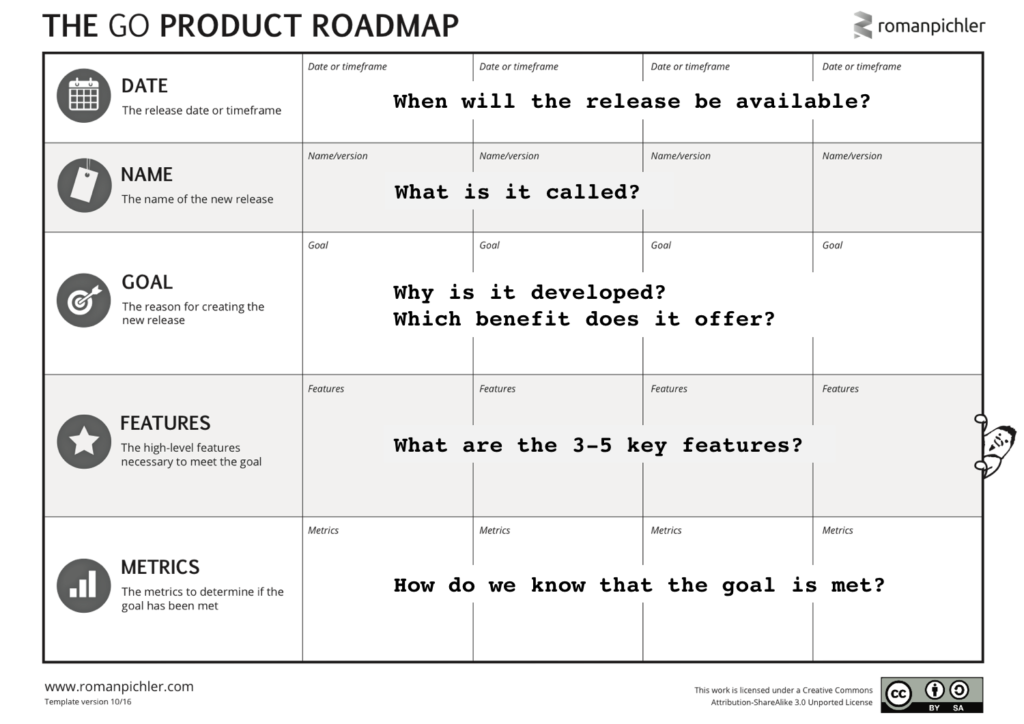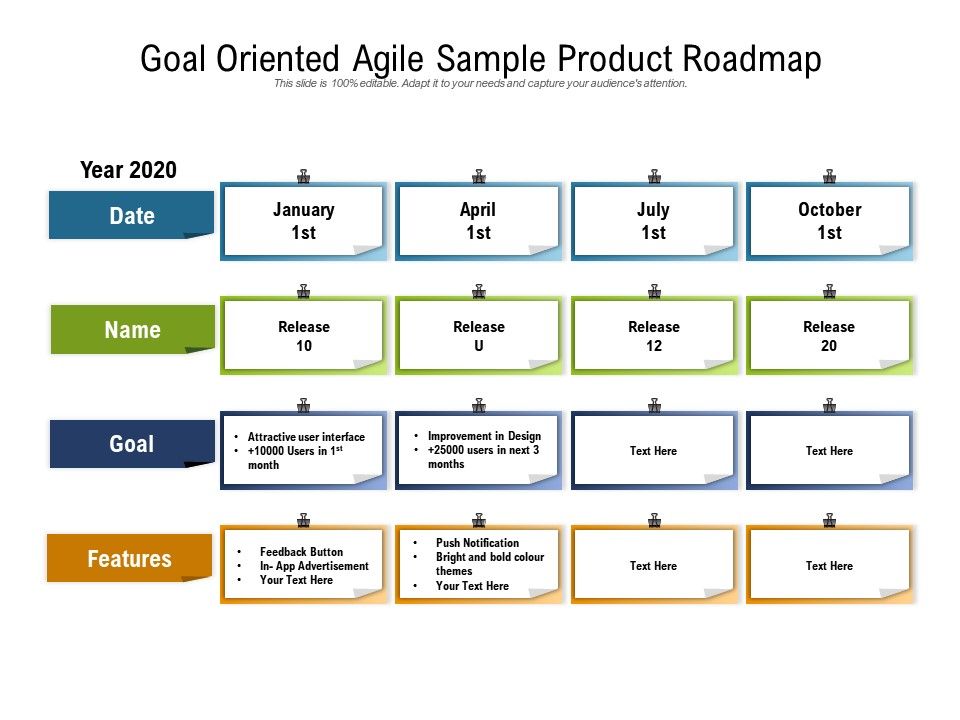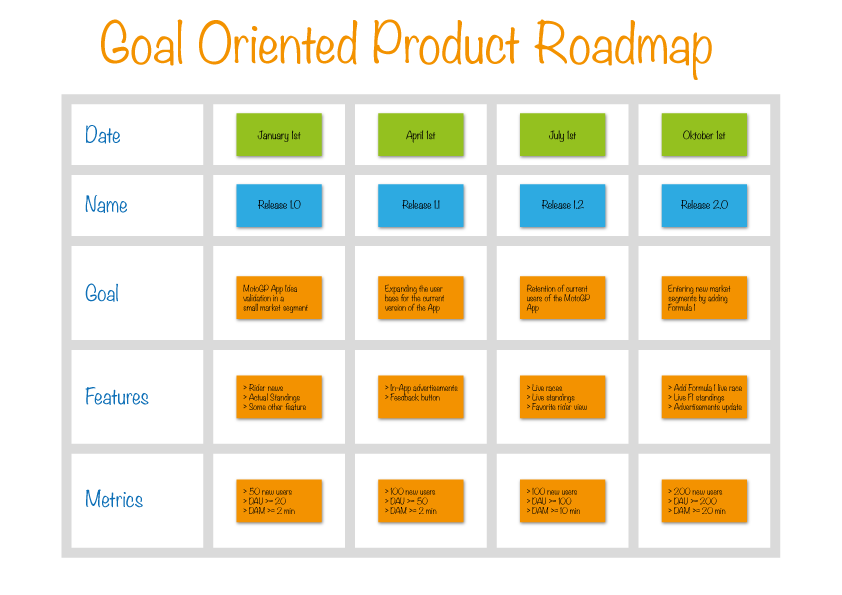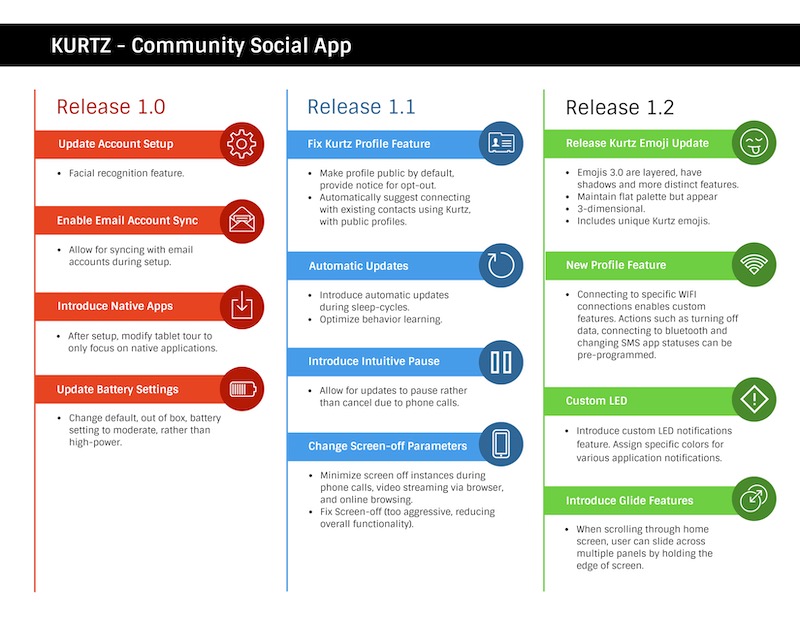What kind of product roadmap is right for your team?

.png)

.png)
Ask any product manager what their favorite product roadmap format is and you’ll you’ll get largely conflicting answers.
A Google search for “best product roadmap” only adds to the confusion. The top results are reviews of product roadmap software and other general articles about product roadmaps.
If you’re asking: What’s the best product roadmap? Or, which product roadmap is right for me? The short answer is: It depends. There’s more on the long answer later, but first, let’s consider what a product roadmap is.
A product roadmap is a written or visual guide depicting different stages in a product’s development. It shows the strategy behind certain product features, why those features are important, and how they’ll help a company achieve its goals and objectives.
Product roadmaps aren’t just used by the product team. Depending on the product, product features, the stage of product development, or even the organization, stakeholders can include but are not limited to: the executive, engineering, support, marketing, design, operations, and sales teams.
The level of detail in a product roadmap may differ because of the stakeholders involved. For example, it may not be necessary to show product investors a product roadmap outlining the programming language or tools that the software engineering team is using.
A more suitable product roadmap would be one wherein the investors can see which product features the engineering team is working on, a probable timeframe for release, and the goals or objectives of each product release.
Depending on your tool of choice, there are potentially over a thousand different product roadmap templates to choose from. But almost all of these templates can be classified into 3 groups. Namely:
Roadmaps that show a specific metric or goal your product is trying to achieve at each stage of its development are goal-based roadmaps. Setting objectives for each product release before thinking of product features ensures that product development efforts are mapped to their respective goals.
Goals will vary at each stage of product development. These can include: simplifying registration, improving engagement, increasing revenue by a certain amount, or retaining users. Product managers will choose an appropriate goal for each product release.
Feature-based roadmaps focus more on feature output rather than on the outcome of those features. With feature-based roadmaps, you may not know why those features are there, but you’ll know their probable release dates.
Which format your roadmaps should take differs based on who will see them. For instance, the product engineers will have roadmaps that include more technical details than the executives or investors may see on their roadmaps.
One way of aligning roadmaps is by using the now-next-later product roadmap template. But this template doesn’t negate the necessity for other roadmaps depending on the audience.
In a jiffy, you’ll see examples of these roadmaps in action, along with templates that can guide you in the creation of your roadmap. Let’s dive in.
Here’s a template for a goal-based product roadmap.

At first glance, you’ll notice that this template has 5 rows, each addressing a different question. Here's what an adaptation of this format could look like:

In the example above, you can see that Release 10 has a goal of presenting an attractive user interface and gaining 10,000 new users in the first month after its release. In this example, a “Metrics” row isn’t necessary because it is addressed in the “Goal” row.
How’s that? Remember the question in the “Metrics” row of the template.
Question: “How do we know that the goal is met?”
Answer: We know the user interface is attractive enough when it attracts at least 10,000 new users.
You can bundle your product release goals with its metrics for success if you prefer it that way. Or you can make it look like the original template as shown in the example below.

Here, the goal for Release U is simply to expand the user base for the current version of the app. If you look at the metrics, you’ll see that one of them is attracting at least 100 new users. If you chose to combine Goals + Metrics, the goal could read: “Expanding the user base for the current version of the app by at least 100 new users.”
Whichever format you prefer from is solely up to your team.
The template below depicts what a goal-based roadmap looks like when placed side-by-side with a feature-based roadmap for releases m and n. It portrays a goal-based roadmap template vs a feature-based roadmap template.
A feature-based roadmap works differently than a goal-oriented roadmap.

A feature-based roadmap is, unsurprisingly, focused on feature output. But it shouldn’t be just an aimless collection of product features. In the example below, you can see how a feature-based roadmap is strategized so that we can see what features will be available for the beta launch anytime between Q3 and Q4.

Additionally, each release builds on the previous one. For example, after the beta launch, the next milestone is 100 DAUs (Daily Active Users), and the next milestone is 1,000 DAUs. Those numbers most likely represent a realistic growth trajectory for the product.

I don’t know the target audience for the roadmap above—but if I had to guess, I’d say they are external stakeholders. This is a decent feature-based product roadmap for that purpose.
True, we cannot see the goals of each product release, or at what stage they’re released. But from this roadmap we can broadly understand what each feature is, what it does, and how users will benefit.
This kind of roadmap should be backed up by solid storytelling to make a compelling argument for the added business value of each release.
Roadmaps aren’t only useful for aligning product teams around a goal or timeline—they are also great tools for communicating with the rest of the company. Audience-based roadmaps can help you get buy-in from internal stakeholders, and simply give other departments more visibility into development.
This is often where the now-next-later product roadmap framework comes in.

Now: What you’re working on now or what you’re currently investing time and resources into.
Next: Things you’ll work on within the near future, either after you’re done with what you’re doing now or whenever you can invest resources into it. The timing here is adjustable but it’s not far off in the future.
Later: Anything you’d love to work on in the future, but you’re not sure how you’ll proceed at the moment or what you need in terms of tech, manpower, finances, etc.
Here’s an example of a populated now-next-later product roadmap:

Each column shows what the team is doing, why they’re doing it, and how it advances their goals.Let’s take the “Now” column for instance:
What they’re doing: Integrating inline checkout into their app.
Why they’re doing it: It will improve the user experience for users who begin the checkout process.
How it advances their goals: It will increase their revenue.
It’s not difficult to understand this product roadmap the way it is. About the now-next-later roadmap, Andrea Saez, product specialist at ProdPad says: “Your priorities (what and why) are clearly documented on the roadmap. You don’t have to explain things differently to different people.”
Another example of a roadmap for non-technical audiences is a pared-down product roadmap template.

On the surface, this template looks simplistic and it’s easy to see how it can work for some people and not others. But that’s the point of the audience-based roadmap: it can be goal-based, feature-based, or based on the thousands of other templates—whichever format is best suited to the audience at hand.
For product managers, it’s a job well-done when different target audiences clearly understand the product roadmaps before them.
There are 3 main factors that will decide the type of product roadmap you’ll use. These are:
A mature product with a reasonable market share will experience fewer changes over time. In this case, a feature-based roadmap might be more suitable.
Conversely, newer products often lean towards goal-based product roadmaps. That’s because with younger products, you’re constantly making changes to satisfy users’ demands and you can’t always correctly predict what effects any changes will have on your company.
When you’re in a market where product features and tech are constantly changing, a goal-based product roadmap is a better choice. In such markets, it's also difficult to predict the new features your product will have many months down the line, or what technologies you’ll use to add them.
All roadmap types can be tweaked as needed for different audiences.
The now-next-later roadmap is touted as the only roadmap every stakeholder can understand, regardless of technical or business knowledge. That said, for some product managers, irrespective of the type of roadmap you’re using, having different versions beats having a single one.
Product roadmaps are not static. They evolve and can take different forms during their lifetime. Don’t get emotionally attached to any single type of roadmap.
Choose them based on the needs of your product, your audience, and your market. This will not only magnify the joy that comes with seeing important stakeholders excited by the changes your roadmap promises, but will also let you experience the joy of shipping successful products on time and within scope.